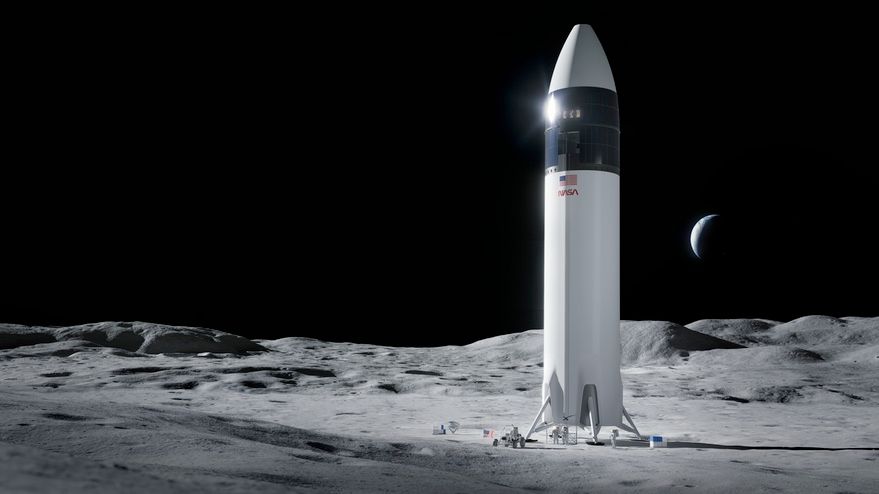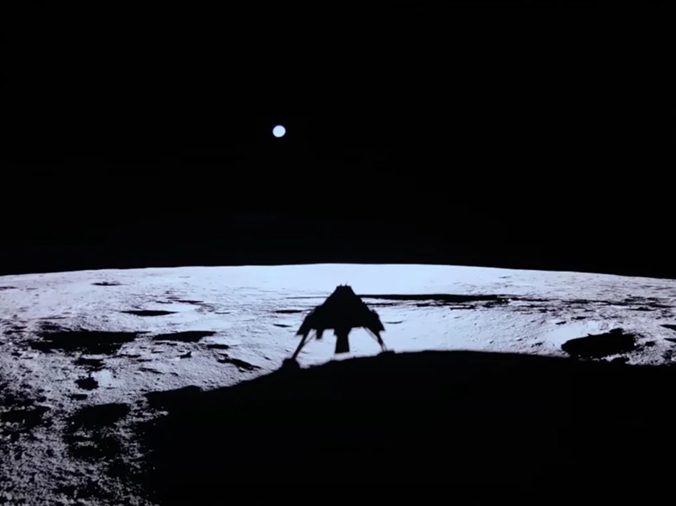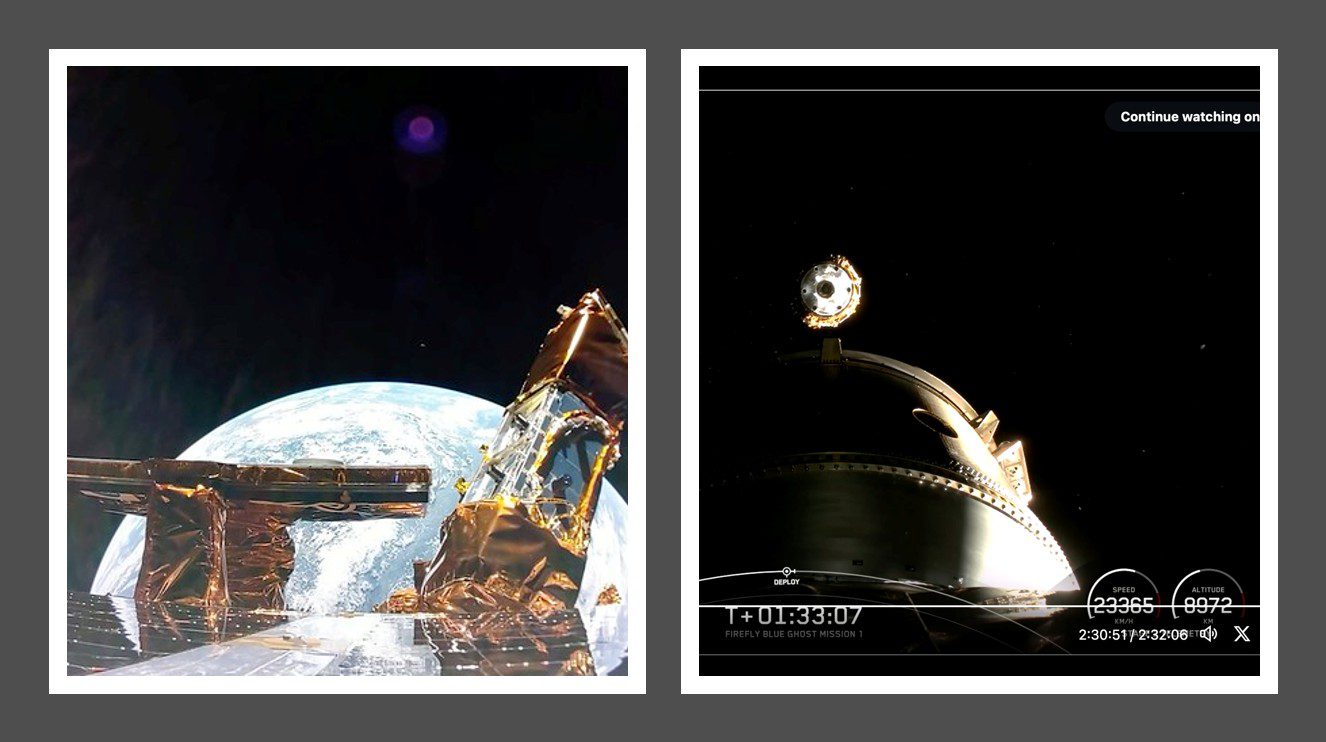Japan watched with bated breath to see if its Smart Lander for Investigating Moon (SLIM) would safely reach the lunar surface and make it only the fifth nation to achieve the feat, following the success of India’s Chandrayaan-3 last year. A live stream of the event by the Japan Aerospace Exploration Agency (JAXA) indicated that SLIM had touched down on the Moon but left viewers with more questions than answers.
“A breathless, numbing 20 minutes of terror” is what Kushiki Kenji, sub-project manager of the SLIM mission, told the media to expect during the lander’s anticipated final descent. He was right to fret: the reality stretched to far longer as spectators were left without a confirmation of the mission’s status when the live stream ended abruptly. JAXA later admitted that things had not gone entirely to plan.
The approach and the final landing sequence, including the drop-off of two LEV small lunar rovers (LEV-1 is a hopping ball and LEV-2 a small wheeled rover), were successful and JAXA confirmed that SLIM had landed on the Moon. However, it soon became apparent that power was draining from the lander’s batteries. Worse still, the solar panel’s recharging cells were not working due to the lander’s unfortunate position.
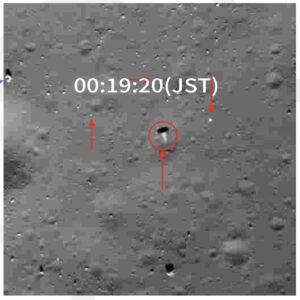
SLIM’S engine nozzle was imaged by the lander’s own navigation cameras as falling away from the craft during the final moments of the landing. Courtesy: JAXA
The spacecraft had apparently drifted during the final part of the landing after one of the two landing engines failed. It fell onto its head due to the slope of a crater, with its solar panels pointing westwards away from the Sun. With power draining from it, the crashed spacecraft was shut down after only three hours on the surface. The lander’s navigation cameras showed that, during the final moments of the landing, SLIM’S engine nozzle had broken off and fallen away.
Officially the spacecraft is still in operation, but it will remain in hibernation/shut down mode until the solar aspect changes enough to allow charging of the spacecraft. The relative orientation of the Sun was expected to be more favourable towards the end of January.
SLIM began its journey onboard an H-2A rocket launched from the Tanegashima Space Centre, an island south of Kyushu, on 6 September, with a clear mandate: to demonstrate a high precision landing on the Moon. SLIM did touch down on the lunar surface making Japan the fifth member of an exclusive club of countries to have achieved this after the US, the former Soviet Union, China and India. It was hard to tell that such a feat had been made though, given the sombre expressions of JAXA officials at a press conference and it later became clear that the landing was, in fact, a crash landing.
Update on 28 January: SLIM, left on its head and pointing in the wrong solar direction, was revived after a change in solar aspect allowed the illumination of its solar cells, according to JAXA. Scientific observations have started, including the firing up of its MBC – Multi-band Camera – to get as much out as possible before the full lunar night begins, which the lander is not designed to withstand.
Update on 1 February: JAXA put SLIM into hibernation on 31 January in anticipation of the lunar night. The agency hopes to recover the lander in mid-February even if it is not designed to survive the lunar night which lasts for two Earth weeks.
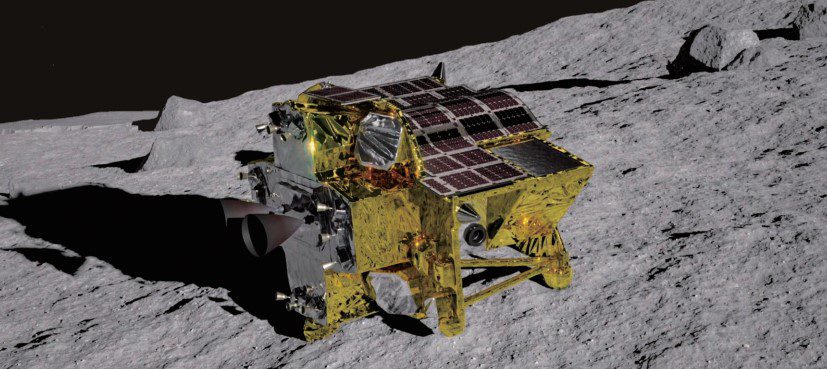
Illustration showing how the SLIM lander should have been after landing. Courtesy: JAXA
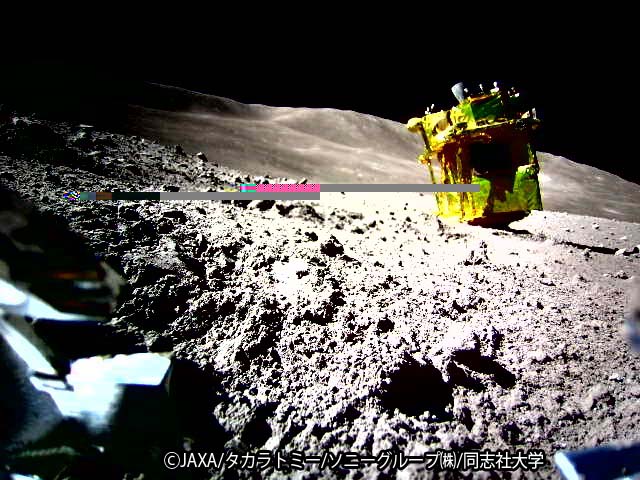
A photo taken by the LEV-2 rover and relayed by LEV-1 rover showed SLIM lander tipped up with its solar arrays faced away from the Sun and with one of its main nozzles obviously missing. Courtesy: JAXA
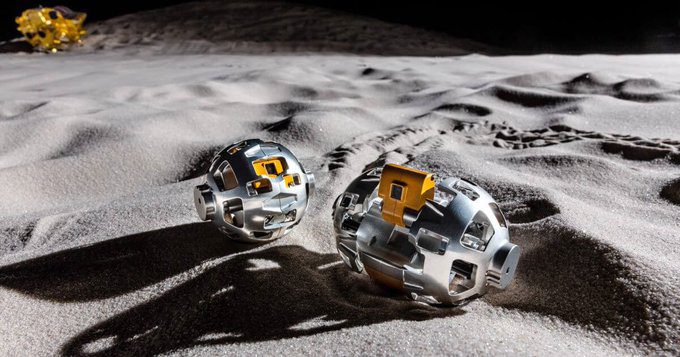
Artist’s impression of the LEV-1 hopping rover and the LEV-2 small rover which hopped off SLIM just before it landed. Courtesy: JAXA
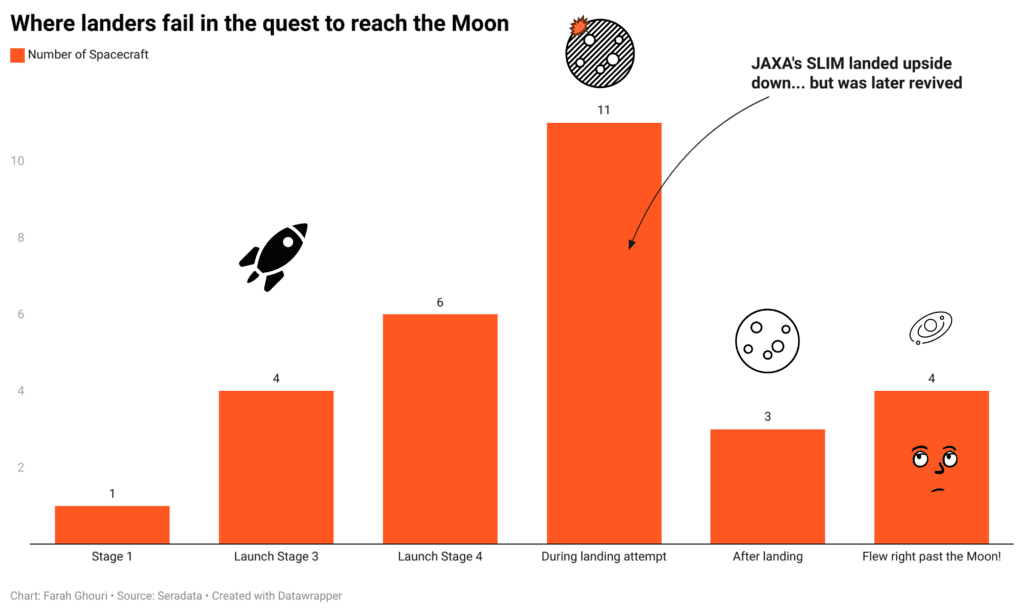
Comment by David Todd: While JAXA subsequently put on a brave face, hailing the success of the pinpoint approach, SLIM was also supposed to demonstrate foolproof landing technology – the latter quite obviously failing. Nevertheless, Japan can take something good away from this mission. Its SLIM spacecraft was robust enough to be recovered to work in an incorrect position, albeit with an unplanned 10-day temporary retirement. Its independent LEV rovers are expected to continue to work on the surface of the Moon, with the larger 2.1 kg hopping ball LEV-1 acting as a communications relay back to Earth for the smaller 0.45 kg LEV-2 wheeled rover – designed and built by the toy manufacturer Takara Tomy.
SLIM’s failure occurred soon after that of Astrobotic’s Peregrine PM-1 lunar lander, which failed to reach the Moon due to an attitude control issue post-launch. Landing and operating landing spacecraft on the Moon is no easy feat. There have been 42 unmanned lunar landing missions, including sample return landers and excluding rovers on-board, according to the Seradata launch and spacecraft database. Of these, 29 suffered some kind of major launch failure, whether it was during landing, in space, or on the Moon. Seven (including two combined sample return landers) failed to orbit, four (including two combined sample return landers) failed to get out of the Earth’s orbit. The remaining 18 spacecraft (including Peregrine PM-1 and SLIM) incurred some sort of failure or serious anomaly either before, during, or after, a lunar landing.
While a lot of these failures took place in the 1960s, lunar unreliability persists even in the age of modern technology. In 2023 alone all three of the lunar landing missions launched were plagued by failures. The Indian Chandrayaan 3 mission successfully launched its Vikram-R lunar and Pragyan-R rover in July. This was followed by a successful landing in August, but both prematurely succumbed to a cold night on the Moon.
SLIM was the other lunar landing failure – although it was resuscitated post-landing. It began its passage to the Moon in September 2023. The Russian Luna 25 Luna-Glob lander mission, launched in August last year, was not even at the point of landing when a preparatory engine firing went on for longer than expected. This slowed the spacecraft down so much that it could no longer maintain lunar orbit, causing it to crash on the Moon just nine days after its launch.
Next up for the trial by lunar surface is Intuitive Machines’ IM-1 Nova-C lunar lander, which is set to launch on a SpaceX Falcon 9 in mid-February.
David Todd contributed to this story



